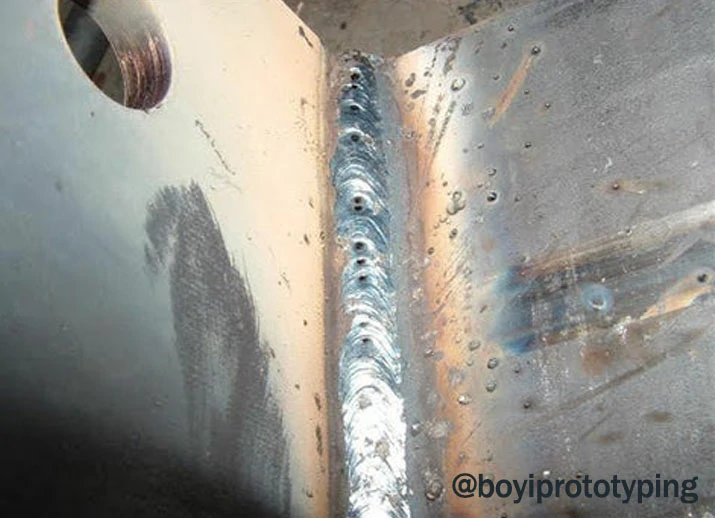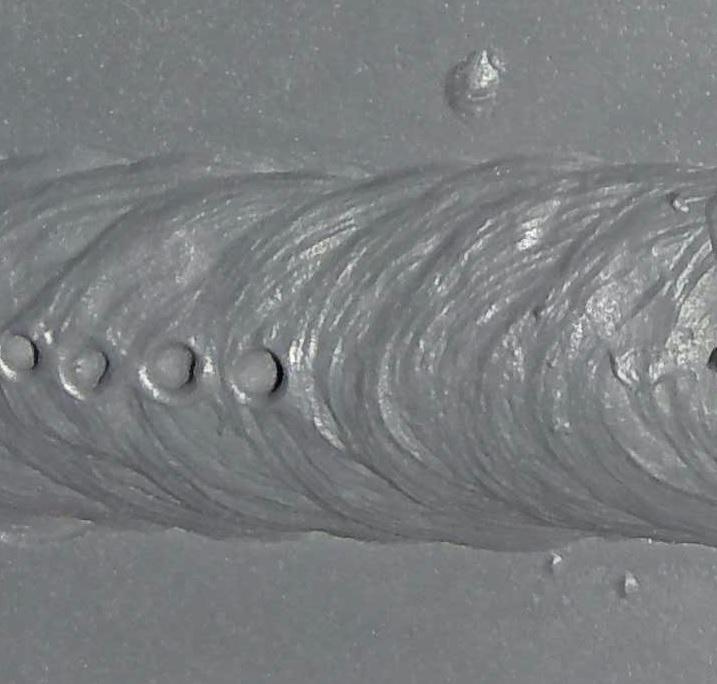What is Porosity in Welding: Finest Practices for Avoiding Porous Welds
What is Porosity in Welding: Finest Practices for Avoiding Porous Welds
Blog Article
Understanding Porosity in Welding: Discovering Causes, Results, and Avoidance Strategies
Porosity in welding is a consistent difficulty that can significantly impact the top quality and honesty of welds. As experts in the welding market are cognizant, recognizing the causes, results, and prevention techniques associated with porosity is important for achieving robust and reputable welds. By diving into the root triggers of porosity, examining its damaging impacts on weld quality, and exploring effective avoidance approaches, welders can improve their knowledge and skills to generate premium welds constantly. The intricate interplay of factors adding to porosity needs a detailed understanding and a proactive approach to make certain effective welding results.
Common Reasons For Porosity
Porosity in welding is primarily triggered by a mix of elements such as contamination, improper protecting, and insufficient gas protection throughout the welding process. Contamination, in the kind of dirt, oil, or corrosion on the welding surface, develops gas pockets when heated, resulting in porosity in the weld. Improper protecting happens when the securing gas, typically made use of in procedures like MIG and TIG welding, is unable to fully protect the liquified weld swimming pool from responding with the surrounding air, causing gas entrapment and succeeding porosity. Furthermore, insufficient gas insurance coverage, usually as a result of incorrect circulation rates or nozzle positioning, can leave components of the weld vulnerable, allowing porosity to develop. These factors jointly contribute to the formation of voids within the weld, weakening its stability and potentially triggering architectural problems. Recognizing and dealing with these usual causes are critical steps in avoiding porosity and ensuring the top quality and strength of welded joints.
Results on Weld High Quality
The existence of porosity in a weld can substantially jeopardize the overall quality and stability of the bonded joint. Porosity within a weld develops gaps or tooth cavities that deteriorate the framework, making it extra susceptible to fracturing, corrosion, and mechanical failure.
In addition, porosity can prevent the effectiveness of non-destructive testing (NDT) strategies, making it testing to detect other defects or stoppages within the weld. This can bring about considerable safety issues, specifically in essential applications where the architectural stability of the welded elements is vital.

Prevention Techniques Overview
Given the damaging effect of porosity on weld quality, effective avoidance techniques are vital to maintaining the architectural integrity of bonded joints. Among the primary avoidance methods is complete cleansing of the base products before welding. Impurities such as oil, grease, corrosion, and moisture can add to porosity, so making certain a clean work surface is important. Correct storage of welding consumables in dry conditions is likewise crucial to prevent wetness absorption, which can result in gas entrapment throughout welding. In addition, choosing the suitable welding parameters, such as voltage, current, and take a trip speed, can help minimize the threat of porosity formation. Making sure adequate protecting gas flow and coverage is another essential prevention method, as inadequate gas coverage can lead to atmospheric contamination and porosity. Ultimately, appropriate index welder training and accreditation are vital for carrying out safety nets successfully and continually. By integrating these avoidance methods into welding methods, the event of porosity can be considerably lowered, causing stronger and more dependable welded joints.
Value of Proper Protecting
Proper shielding in welding plays an important function in stopping atmospheric contamination and making sure the stability of bonded joints. Protecting gases, such as argon, helium, or a mixture of both, are commonly used to secure the weld pool from reacting with aspects in the air like oxygen and nitrogen. When these responsive components enter call with the hot weld swimming pool, they can trigger porosity, causing weak welds with lowered mechanical homes.

Poor shielding can result in various defects like porosity, spatter, and oxidation, compromising the architectural stability of the bonded joint. Therefore, sticking to appropriate protecting practices is vital to create high-grade welds great post to read with minimal defects and make certain the durability and reliability of the welded parts (What is Porosity).
Monitoring and Control Techniques
Exactly how can welders effectively check and control the welding procedure to make certain ideal results and stop defects like porosity? One secret approach is through using sophisticated surveillance technologies. These can consist of real-time surveillance systems that supply responses on specifications such as voltage, existing, travel speed, and gas circulation rates. By continuously monitoring these variables, welders can identify deviations from the suitable conditions and make instant changes to avoid porosity formation.

In addition, implementing appropriate training programs for welders is vital for monitoring and regulating the welding process effectively. What is Porosity. Enlightening welders on the value of keeping consistent criteria, such as correct gas securing and take a trip speed, can assist avoid porosity issues. Regular evaluations and certifications can additionally make sure that welders are skilled in surveillance and regulating welding processes
In addition, making use of automated welding systems can enhance surveillance and control abilities. These systems can specifically regulate welding criteria, reducing the chance of human error and guaranteeing consistent weld quality. By combining advanced monitoring modern technologies, training programs, and automated systems, welders can effectively check and manage the welding process to lessen porosity flaws and attain high-grade welds.
Final Thought

Report this page